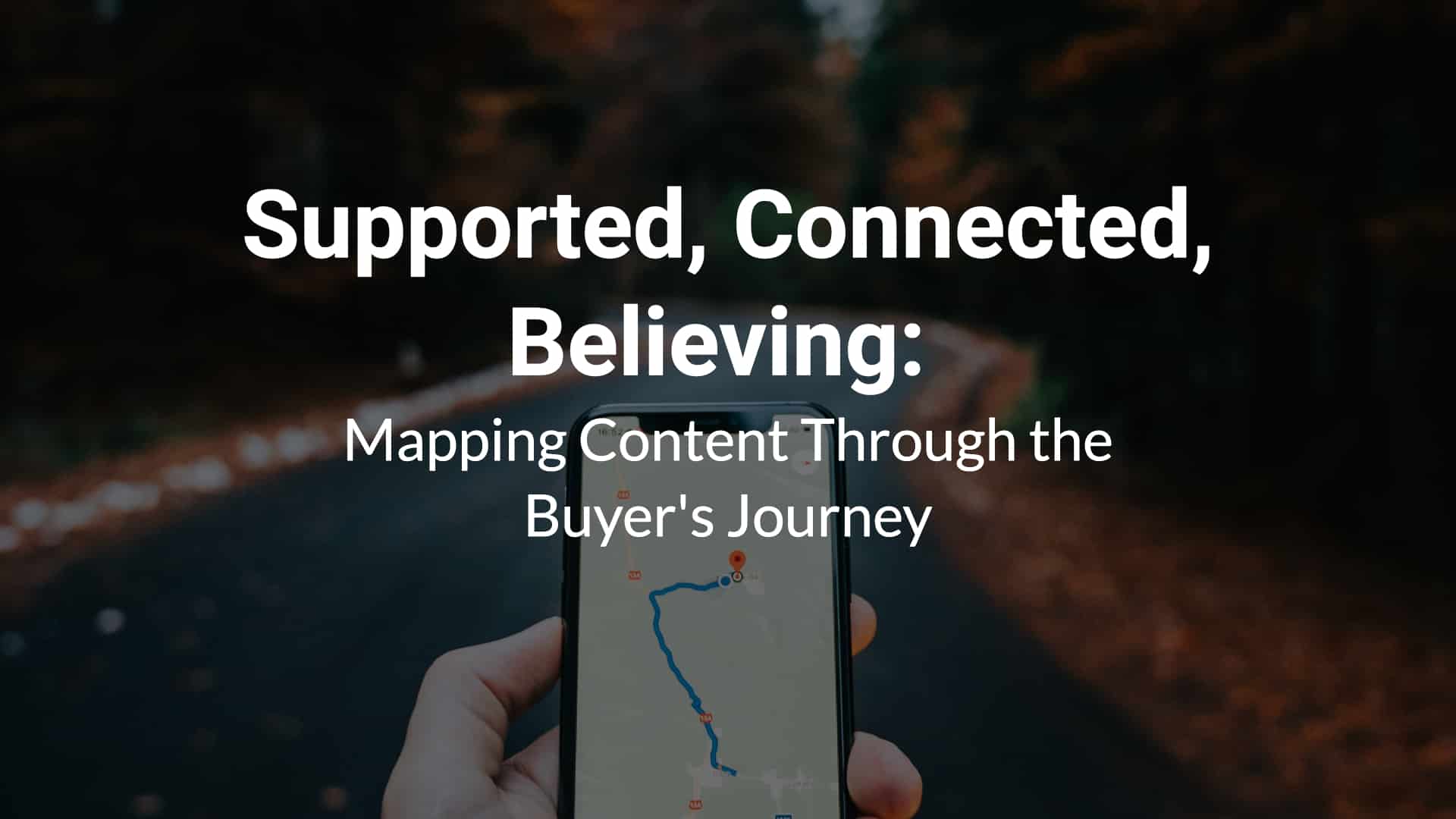Some marketers will tell you the B2B customer journey is dead.
On the one hand, with so many channels the customer could be coming from and so many new decision factors to contend with, the traditional linear journey is outdated. The path from zero awareness of their problem to full-fledged loyal customer looks more like this these days:

On the other hand, the traditional idea of a straight path to becoming a customer still gives us a starting point for creating content — so I don’t think we should throw it out entirely.
But I do think we should be looking at it a little differently.
I believe at every stage of the buyer’s journey your customers should be supported by content that helps them right where they are, while moving them deeper into relationship with your company.
For content mapping, rather than know-like-trust, I think of it as supported-connected-believing.
This approach shifts the focus from how the customer feels about your company (do they know the company, like the company, trust the company) to how the customer feels, period. It takes your content marketing from company-focused to customer-focused — and this shift helps engender trust.
We can also grow and reinforce that trust by using content to continue the conversation. Conversation is key to relationship, and that’s what the buyer’s journey is really about: building a relationship with your customers.
Mapping Content Along the Buyer’s Emotional Journey
Your customers, like the rest of us, are probably on content overload — so don’t waste their time with content that has no purpose. Regardless of which stage in the buyer journey they’re in (blue funnel), your content needs to meet one of the four objectives to entertain, inspire, educate or inform (green funnel).

When a customer is unaware, provide them with content that is resonant, engaging, and entertaining. This type of content connects with the customer at the most basic human level and can get your company noticed. Sales shouldn’t really figure in here at all — this is the start of the relationship, so don’t propose marriage just yet! Content that inspires your audience can also fit well in this stage.
As your customers move from unaware to problem aware, continue to offer inspiring content, and begin to educate them on how they might solve their problem. This is where the relationship goes from first date to “you might be a keeper.” You’re laying the foundation for conversation with compelling and truly useful content.
The solution aware stage is where more persuasive, product-oriented content starts to fit in. Customers are actively looking for solutions to their problems, so stories are great tools at this point — walk the reader through a scenario that relates to them and demonstrate how your product or service helped resolve the problem.
And, most importantly from here on out: Use your customers’ own language in the content. Make sure you’ve done thorough customer research so you can use the exact words they do to describe their problems, other ways they might be trying to solve those problems, and how they can finally get what they need with your solution. When you speak the same language as your customers, connection happens naturally.
Once a customer is product aware (they know your product by name and consider it as a possible solution), you’re helping them move from considering your product to purchasing it. Craft content that continues to educate them about specific ways your solution makes their lives easier — and clearly inform them how to buy it.
And finally, we get to the wedding: your most aware customers. These are the people who have purchased from you at least once, and now you’re keeping them informed in a way that encourages continued dialogue and builds community.
Bringing It All Home
This customer-first approach supports the customer at each step along the journey, and into relationship with your company. If you’ve done your customer research, you know exactly what the customer needs to feel supported at each stage, and you can align your content to those needs.
In regard to what content types work best at each stage, that evolves, so check your metrics regularly. Over time, there are always interesting shifts in what content types (mediums, formats) work best for each stage. In Content Marketing Institute’s recent study, here is what they found works for demand-generation content in early 2021:

(Note: One important change this year is that e-books are being rated more effective in the middle stage than in previous years, which indicates demand gen marketers are using e-books further down the funnel to provide more robust content during the nurturing process.)
Remember, content is the conversation that’s happening with your customers when you’re not around. Just as you would want customers to feel supported, seen and appreciated in a verbal conversation, your content should leave customers with that same experience.
